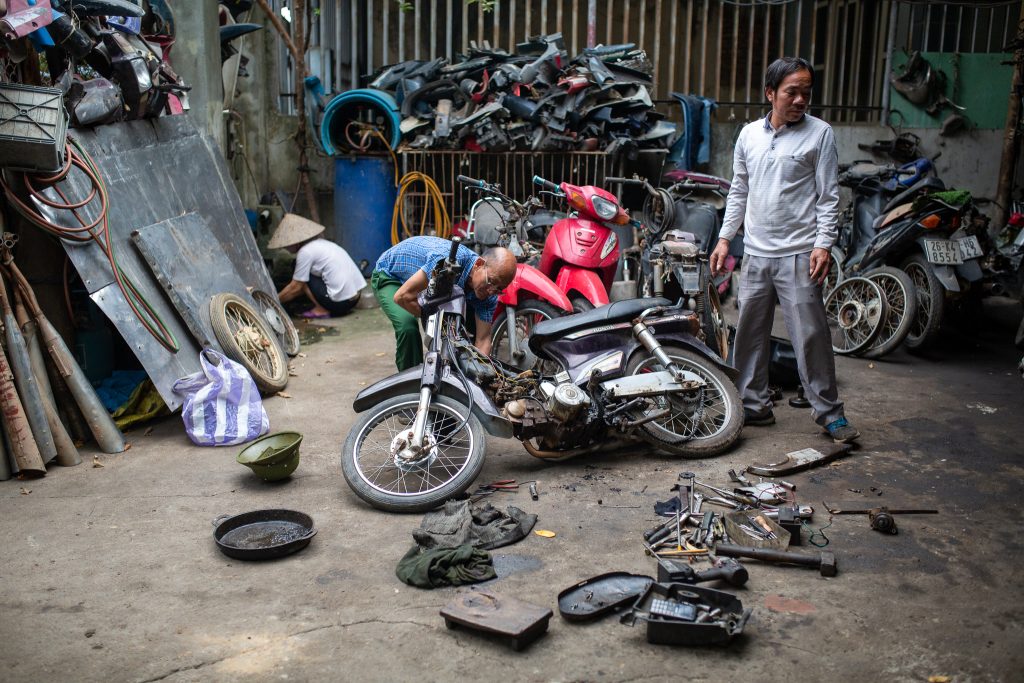As an economy develops, economic policy and social policy tend to overlap. Reports of long queues of people in Ho Chi Minh City withdrawing their social insurance contributions after losing their jobs during the COVID-19 pandemic is an example.
Workers in the formal sector viewed their contributions to a retirement income insurance scheme — known generally as ‘social insurance’ — as their savings to be drawn upon in hard times. This helped boost demand and enhanced short-term macroeconomic management. Yet premature withdrawal makes retirement savings and insurance schemes financially unsustainable in the longer term. This is a challenge facing Vietnam’s government in developing a coherent social protection system aligned with the aspiration of being a middle to upper middle-income country.
Vietnam’s social protection system has three largely uncoordinated strands — social assistance, social insurance and poverty alleviation. Tax revenues fund social assistance and poverty alleviation, while compulsory contributions of workers and employers in the formal sector fund social insurance.
Both the coverage and funding of social assistance are well below regional and global comparators. Vietnam spends around 0.66 per cent of GDP on social assistance, excluding health insurance subsidies, compared with about 1 per cent for East Asian and Pacific countries and 0.8 per cent for the South Asian Region.
Social assistance covers below 20 per cent of the Vietnamese workforce, compared with over 40 per cent for the developing Asian region. Its benefits represent only around 5 per cent of the household average monthly consumption expenditure for the poorest quintile, compared to between 19–20 per cent for lower middle-income countries on average. There is also no indexation — social assistance benefits diminish over time in both relative and real terms.
As for poverty alleviation, despite Vietnam’s success in lifting people out of absolute poverty through economic growth and job creation, there remain pockets of dire poverty. These are mainly concentrated among ethnic minorities located in difficult terrains that need specialised attention and resources.
The social insurance strand is currently comprised almost entirely of compulsory contributions by employers and workers. When doubled up as unemployment insurance, social insurance schemes become unsustainable for longer-term retirement income protection.
Alarmingly, the social insurance scheme covers only workers in the formal sector. In 2018, around 76 per cent of all workers — or between 55–60 per cent of all non-agricultural workers — were in the informal sector with no employment contracts and mostly no social insurance. An estimate from the General Statistics Office of Vietnam shows informality at similarly high levels of 68.5 per cent in 2021.
Given difficulties in measuring informality, the difference between 2018 and 2021 does not suggest a decreasing trend. Indeed, informality has increased in rural areas because of the COVID-19 pandemic. Urbanisation does not seem to have reduced informality in employment — the development of the gig economy in urban areas could even extend this trend. Slightly less than half (around 43 per cent) of Vietnam’s workforce is estimated to be in formal contracted employment by 2040. Extending social insurance schemes funded by compulsory contributions from both employers and employees to the large informal sector would be challenging.
In 2006, the government introduced a voluntary contributory scheme in an attempt to include some of the informal workforce. Yet the adoption rate has been low. The scheme covered only about 300,000 workers by 2018. Better incentives — perhaps in the form of tax-funded matching contributions — are necessary for such a scheme.
Still, some contributions from workers to their retirement income protection are essential for a scheme’s financial sustainability in the long run as Vietnam’s population ages. A contributory scheme would also build up a pool of domestic capital for domestic investment in the long term.
Social assistance and social insurance require significantly higher tax commitments in the medium term and deeper reforms of the pension system in the long term. Given the overlap between economic and social policies, and Vietnam’s relatively low levels of tax spending on social protection compared with regional peers, there is good reason for such a commitment.
Vietnam has recently reduced the value-added tax (VAT) level from 10 per cent to 8 per cent except for certain services. In the medium term, Vietnam can reverse this reduction and perhaps even increase the VAT level to 11–12 per cent, aligning with Indonesia and the Philippines. But there is limited space for increasing personal income tax. Vietnam’s marginal rate of 35 per cent for personal income tax is already high by regional standards, and collecting personal income tax from workers in the large informal sector could be challenging.
Despite a large informal sector, Vietnam has a high level of digital access compared with its ASEAN peers. As connectivity is important in the design and delivery of social services, a high level of digital access could potentially make the coverage and delivery of social protection programs much more targeted and efficient.
Building a social protection program that evolves with a country’s economic development and enhances its economic policy is a long-term goal. Vietnam has made a promising start, but much more needs to be done.
Suiwah Leung is Honorary Associate Professor at the Crawford School of Public Policy, The Australian National University.


Vietnam's social protection system has three largely uncoordinated aspects — social assistance, social insurance and poverty alleviation. Its social assistance spending and coverage are below regional and global averages, and most workers in the informal sector are without social insurance. The country needs long-term reforms and higher tax commitments to its pension system for a financially sustainable retirement insurance scheme. Vietnam would also benefit from better incentives for the adoption of voluntary schemes, and targeted and efficient social protection programs through its high digital access.